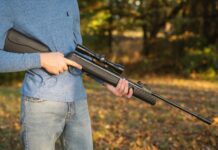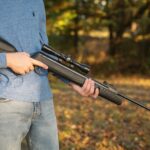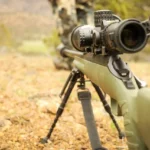Many people love meat because it’s a good source of protein. Do you need ideas on the tastiest meat dish for your lunch or special event? You’ll never go wrong with well-cooked deer brisket, as it has a spicy flavor when you serve it hot.
The brisket on a deer lies at the bottom of a deer’s chest, in front of the ribcage. Removing a deer’s brisket involves removing the shoulders, backstrap, and tenderloins and cutting through the cartilage.
The rest of this article will:
- Delve deeper to explain where to find deer brisket.
- Discuss whether you must sear a deer’s brisket.
- How to remove brisket off a deer.
- Where to find the best meat on a deer.
- You’ll also learn the differences between venison backstrap and the tenderloin and what part of a deer is best for steaks.
Table of Contents
Can You Get Brisket off a Deer?

Though tough, brisket is one of the most delicious meats in mammals, including deer. While butchering a deer to get the brisket may seem like a painstaking process, it’s achievable with the right tools and skills.
You can get brisket off a deer even though it’s smaller and leaner than a cow’s brisket. Using a sharp knife, you should remove it by cutting off the meat between the forelimbs on the deer’s chest through the cartilage. Also, cut out all fat up to the backbone.
Since a deer’s brisket is smaller than other big animals, removing it is a challenge to most people. However, when you follow the right butchering procedure, you can get the brisket off the carcass.
You can make the best fajitas, burgers, or sausages with this piece of meat or trim and grill it under higher heat.
Related Best Knife for Processing Deer | Hint: You Need Two.
Should Brisket Be Seared?
Brisket should be seared because it is essential to build up the meat’s flavor. However, you need to prepare it adequately before searing it and let it slow-cook in the oven or pan. Slow cooking makes the meat tender and easier for you to slice it afterward.
Searing venison brisket is a common preparation method in most traditional dishes as it adds flavor to the meat. Searing involves cooking the meat’s surface under high temperatures until it caramelizes, otherwise known as forming a brown crust.
Adding some oil creates contact between the brisket and the cooking surface.
- Before you sear the brisket, trim away the fat pad on the brisket’s outer surface. A large sharp knife will come in handy during this preparation step.
- Then, marinate it using salt, pepper, or other spices a day before you cook it.
Moreover, it’s important to remember that deer meat is generally tough, and storing it for a couple of days enables the aging process, which will make the meat tender, including the brisket. Do this before starting your cooking process, and you’ll have tender briskets.
After aging, trimming off fat, and marinating the deer’s brisket, you can now sear it.
If you notice that there are still some grey spots on the meat after searing, it means one side of the brisket didn’t cook well. To avoid these spots, you should ensure that you flip both sides to burn evenly.
How To Remove Deer Brisket
You might be thinking about getting a professional butcher to remove the brisket from your deer, right? However, there’s an easier way to do this in the comfort of your home.
Removing a deer’s brisket is one of the final meat-cutting steps of butchering.
After you’re through with the major butchering procedure, you can remove the brisket in a slab using the flat of your knife. Cut the meat carefully against the lower-chest region, trimming off the cod fat and tallow.
To get to the deer’s brisket, you have to butcher cut major parts. Here are the steps:
- Cut and pull the shoulders from the torso of the deer to expose the cut zone which your knife will pass through.
- Pull the front leg away from the torso, and with your knife’s blade parallel to the ribcage, cut the hinge area.
- Remove the backstraps and the tenderloin, but trim away the excess fat layer first. To do this, find the hip bone and cut under this bone to the backbone on both sides. Loosen and get the meat off by ensuring that your knife is close to the bone.
- Cut through the ribs down to the backbone. You’ll find the brisket on the outer surface of the ribs. Cut it off while your knife’s blade is against the lower-front chest region and remove any cod fat.
Check out this YouTube video that shows the process of removing a brisket:
Where Is the Best Meat on a Deer?
After butchering a deer, you’ll want to get the most out of the process. Many people go for the bigger and popular venison chunks. But where’s the best meat on a deer?
The backstraps and tenderloins are the best meat cuts of a deer. These parts are tender and will give you a succulent and delicious meal. Other preferred parts include the hindquarters, rump, and chucks.
Backstraps and tenderloins are a favorite to most venison lovers as they are tender and easy to cook. The hindquarters have a variety of uses, as you can use them as steak, in stews, kebabs, or jerky.
There are many other recipes for preparing this dish that you can try out on your own.
Is Venison Backstrap the Same As Tenderloin?
Differentiating between the venison backstrap and tenderloin can be a bit confusing.
A backstrap isn’t the same as a tenderloin. The venison backstrap is the meat along a deer’s spine on the outer part of the backbone. However, tenderloin sits beneath the spine, inside the abdominal cavity along the backbone.
Tenderloin is about 10” to 12” (25.4 to 30.48 cm) smaller than the backstrap but very delicious.
What Part of a Deer Is Best for Steaks?

Are you a steak lover? Well, you can make the best steaks from some parts of venison.
The hindquarters of the deer is best for steaks. The top and bottom rounds have extensive muscles but also have tender sections. They produce the best steaks and cuts for other dishes. Venison hindquarters are large, with cuts for various uses.
You can get the best steak from these parts in young or older deer. However, the bottom rounds are more tender than the top ones.
Final Words
You can get brisket off a deer by following the correct butchering process all by yourself. It may not be a very easy cut to make, but it’s doable. Once you have the brisket, you can leave it for a few days to age and then prepare it for cooking by marinating first.
Searing the brisket is also a great idea as it helps to lock in the flavors.
For more, check out The 5 Best Ways to Preserve Meat in the Wild.








































